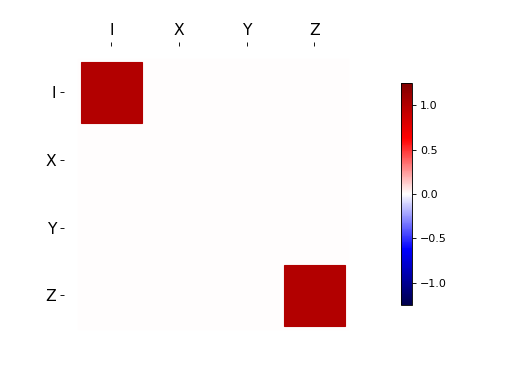Superoperators, Pauli Basis and Channel Contraction
written by Christopher Granade <http://www.cgranade.com>, Institute for Quantum Computing
In this guide, we will demonstrate the tensor_contract function, which contracts one or more pairs of indices of a Qobj. This functionality can be used to find rectangular superoperators that implement the partial trace channel :math:S(rho) = Tr_2(rho)`, for instance. Using this functionality, we can quickly turn a system-environment representation of an open quantum process into a superoperator representation.
Superoperator Representations and Plotting
We start off by first demonstrating plotting of superoperators, as this will be useful to us in visualizing the results of a contracted channel.
In particular, we will use Hinton diagrams as implemented by hinton, which
show the real parts of matrix elements as squares whose size and color both correspond to the magnitude of each element. To illustrate, we first plot a few density operators.
from qutip import hinton, identity, Qobj, to_super, sigmaz, tensor, tensor_contract
from qutip.core.gates import cnot, hadamard_transform
hinton(identity([2, 3]).unit())
hinton(Qobj([[1, 0.5], [0.5, 1]]).unit())
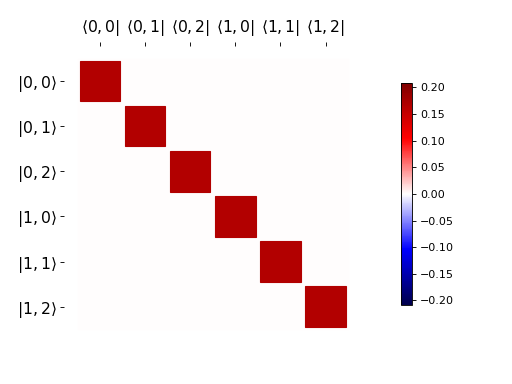
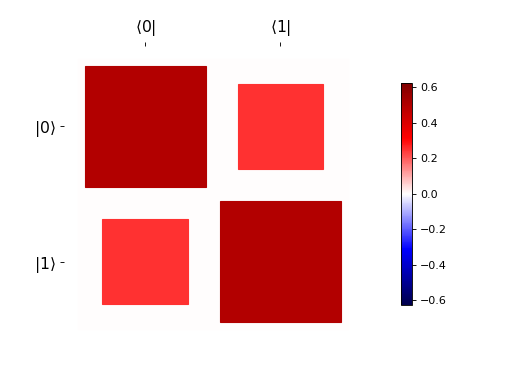
We show superoperators as matrices in the Pauli basis, such that any Hermicity-preserving map is represented by a real-valued matrix. This is especially convienent for use with Hinton diagrams, as the plot thus carries complete information about the channel.
As an example, conjugation by \(\sigma_z\) leaves \(\mathbb{1}\) and \(\sigma_z\) invariant, but flips the sign of \(\sigma_x\) and \(\sigma_y\). This is indicated in Hinton diagrams by a negative-valued square for the sign change and a positive-valued square for a +1 sign.
hinton(to_super(sigmaz()))
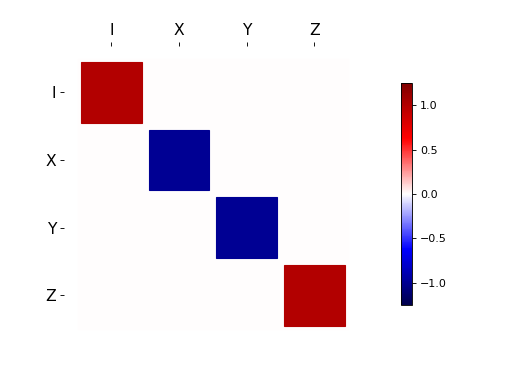
As a couple more examples, we also consider the supermatrix for a Hadamard transform and for \(\sigma_z \otimes H\).
hinton(to_super(hadamard_transform()))
hinton(to_super(tensor(sigmaz(), hadamard_transform())))
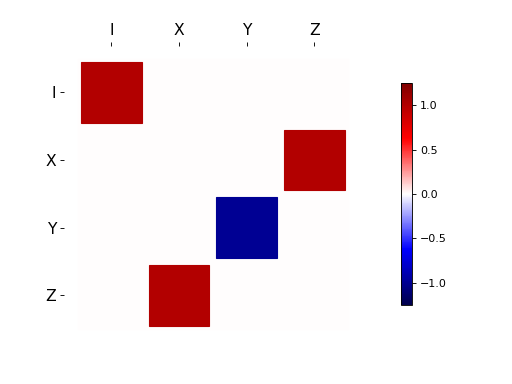
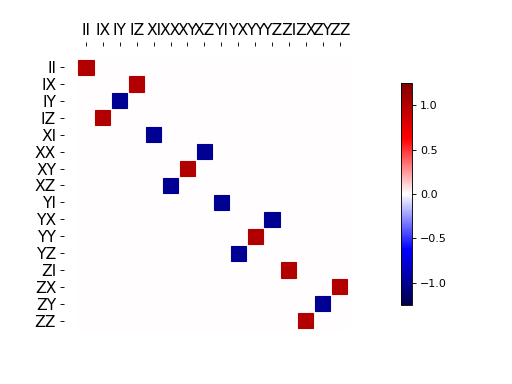
Reduced Channels
As an example of tensor contraction, we now consider the map
We can think of the \(\scriptstyle \rm CNOT\) here as a system-environment representation of an open quantum process, in which an environment register is prepared in a state \(\rho_{\text{anc}}\), then a unitary acts jointly on the system of interest and environment. Finally, the environment is traced out, leaving a channel on the system alone. In terms of Wood diagrams <http://arxiv.org/abs/1111.6950>, this can be represented as the composition of a preparation map, evolution under the system-environment unitary, and then a measurement map.
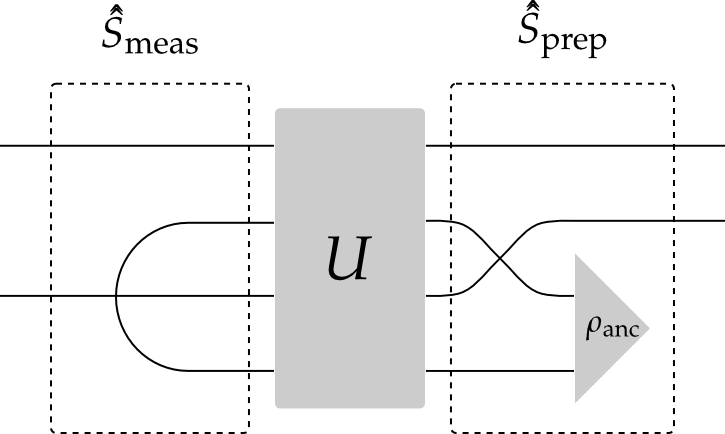
The two tensor wires on the left indicate where we must take a tensor contraction to obtain the measurement map.
Numbering the tensor wires from 0 to 3, this corresponds to a tensor_contract argument of (1, 3).
tensor_contract(to_super(identity([2, 2])), (1, 3))
Meanwhile, the super_tensor function implements the swap on the right, such that we can quickly find the preparation map.
q = tensor(identity(2), basis(2))
s_prep = sprepost(q, q.dag())
For a \(\scriptstyle \rm CNOT\) system-environment model, the composition of these maps should give us a completely dephasing channel. The channel on both qubits is just the superunitary \(\scriptstyle \rm CNOT\) channel:
hinton(to_super(cnot()))
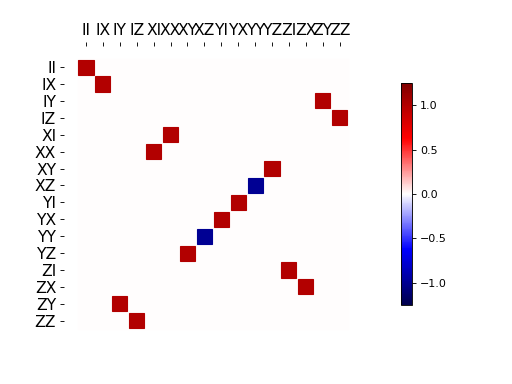
We now complete by multiplying the superunitary \(\scriptstyle \rm CNOT\) by the preparation channel above, then applying the partial trace channel by contracting the second and fourth index indices. As expected, this gives us a dephasing map.
hinton(tensor_contract(to_super(cnot()), (1, 3)) * s_prep)
